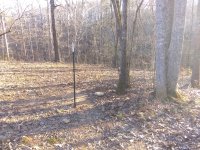LouNY
Super Star Member
- Joined
- Jul 4, 2015
- Messages
- 14,271
- Location
- Greenwich, NY
- Tractor
- Branson 8050, IH 574, Oliver 1550 Diesel Utility (traded in on Branson) NH 8160. Kioti CK2620SECH
When I read the OP's first post two things came to mind for me.
One was that any trees next to a building are going to be an issue sooner or later.
The second was having a retaining wall just 3 feet away from the building, to me that is just going to be a trap for leaves and debris
to gather in and cause troubles. Often around here a pole barn on un level sites is quite common I have seen many were the base was dug out
to floor level and ground contact treated lumber is used for the wall till a foot or two above the outside grade which is then backfilled to the original grade.
In effect reducing the outside wall height.
Also most of our pole barns require a concrete pad under the poles so the holes are 18-24 inch diameter with 6 inches of concrete poured and cured before the poles are set.
You can tell who didn't use footer pads in a few years the outside roof line has a wave in it from a pole or two settling.
One was that any trees next to a building are going to be an issue sooner or later.
The second was having a retaining wall just 3 feet away from the building, to me that is just going to be a trap for leaves and debris
to gather in and cause troubles. Often around here a pole barn on un level sites is quite common I have seen many were the base was dug out
to floor level and ground contact treated lumber is used for the wall till a foot or two above the outside grade which is then backfilled to the original grade.
In effect reducing the outside wall height.
Also most of our pole barns require a concrete pad under the poles so the holes are 18-24 inch diameter with 6 inches of concrete poured and cured before the poles are set.
You can tell who didn't use footer pads in a few years the outside roof line has a wave in it from a pole or two settling.

